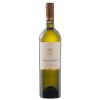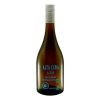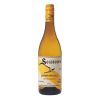Share this on your Socials
AA Badenhorst Family Wines Secateurs Chenin Blanc-2023
$35.00 Incl. GST
You will receive an order confirmation email and you will receive courier updates as soon as it is booked for pickup!
The aromas are flinty with honey, orange blossom and white stone fruit notes.
Vineyards and vines
The Chenin Blanc grapes are mostly from our farm, Kalmoesfontein situated on the northern side of the Paardeberg Mountain. Our neighbour also supplies us with some exceptional old vine fruit – making us the world’s smallest co-op! We maintain that high quality fruit comes from old un-irrigated bushvines grown on a variety of granite soils that are naturally low yielding. Most of our Chenin vines were planted the late 1960’s to mid-1970 and tend to yield around 4 tons/hectare.
Grapes
Chenin Blanc with a sprinkling of Palomino and another secret grape (the rest we turn into delicious sherry style stuff!)
Vinification
The grapes are hand picked with great care and chilled overnight in a cold room. The following day they are whole bunch pressed to a settling tank. These vineyards were picked over a period of 12 days and each day fresh juice was added to the already fermenting tanks – this extended the alcoholic fermentation by about 20 days but was also very important in the complete integration of the wine as all the various vineyards or components were fermented together. Some of the juice is also fermented in older casks and big foudres; around 25% of the total.
Maturation
This wine was left on its gross lees for 7 months before being bottled with occasional lees stirring during this time.
Why the Secateurs – shape our bushvines during the winter pruning and are used to pick the ripe grapes in summer. Our family has, for the last three generations, nurtured our vines so that they can produce fruit of integrity. The first Secateurs Chenin Blanc bottled under the Badenhorst Family Wines range was in 2009 and was the start of a lifelong affair with this most wonderful grape. The 2017 spent time on its lees in concrete tanks and old casks – this is an important part of the maturation and gives incredible texture and palate weight to the wine.
The aromas are flinty with honey, orange blossom and white stone fruit notes.




